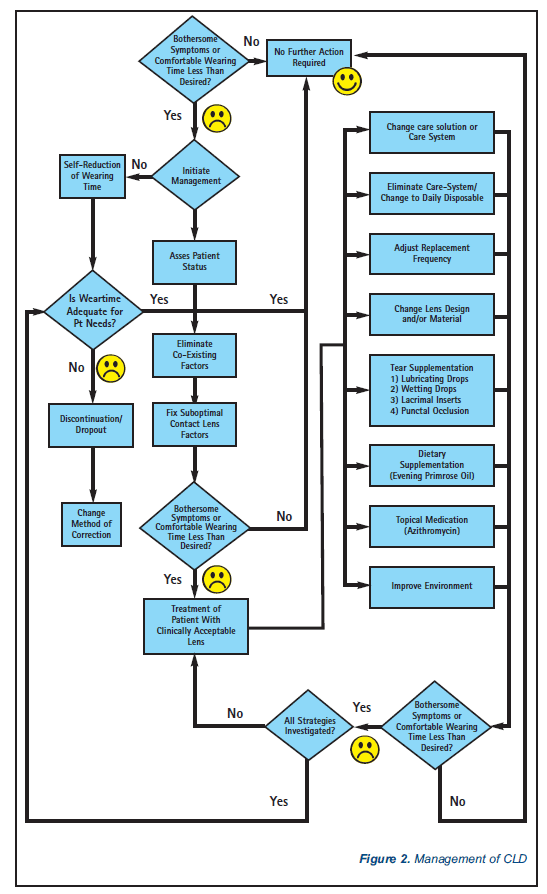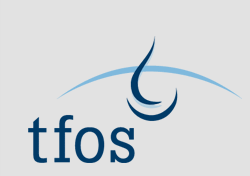The condition of CLD is a considerable management and therapy challenge in clinical practice. While the causes of the short-term discomfort following difficulty with lens insertion generally are understood and appropriate remedies are straightforward, symptoms of discomfort and dryness that persist and increase toward the end of the day pose a more intractable problem. Managing wearers in these circumstances requires careful, individual assessment to eliminate concurrent conditions that may confuse the clinical picture, followed by a determination of the most likely cause or causes, and identification of corresponding treatment strategies (Fig. 2). The aim is to ensure that the contact lens is in a clinically acceptable ocular environment without obvious lens deficits of either a physical or behavioral nature.
A careful history of the presenting problem and the general status of the patient is a critical first step in the management process for CLD. Key elements in the evaluation include the age and sex of the wearer, timing and onset of symptoms, type of lens and lens material, care systems, lens replacement schedules, use of additional wetting agents, wear times and patterns, compliance and adherence to instructions, the occupational environment, coexisting disease, and current medications.
It is important to recognize that the symptom ‘‘discomfort’’ is relatively nonspecific, as discomfort can result from many sources other than the contact lens. Coexisting pathologies that may be responsible for the patient’s symptoms, such as ocular medicamentosa, systemic disease (autoimmune diseases and atopic disease), eyelid disease (blepharitis and anatomic abnormalities), tear film abnormalities, and conjunctival and corneal diseases, are important to identify and treat before focusing on the contact lens as the source of discomfort.
After noncontact lens causes of CLD have been identified and treated, the focus is on the contact lens and care system. Contact lens defects, such as edge chips and tears, deposits, and nonwetting surfaces, are typical causes of contact lens– related problems. Contact lens design properties (such as edge design), material properties, and on-eye fit, also are issues that must be considered. Care solutions and their components or improper care regimens also may at times contribute to CLD, and the benefits of daily disposable lenses may, in part, be due to elimination of these factors. However, the solution in the blister pack of disposable lenses also can be a source of CLD, particularly on application of contact lenses.
Frequent and appropriately-timed replacement of contact lenses may reduce or eliminate deposit formation. Switching to a different care system may have some effect on deposit formation. Although changing lens material may be helpful, it is difficult to separate material from design and surface effects as sources of CLD.
Fitting with steeper base curves, using larger diameterlenses, alternating the back lens surface shape, and using lenses with a thinner center thickness may improve CLD. However, it is difficult to manipulate lens parameters in isolation from each other, as altering one parameter may influence the other parameters.
The use of topical artificial tears and wetting agents, oral essential fatty acids (FA), punctal occlusion, and topical medications (e.g., azithromycin, cyclosporine A), along with avoiding adverse environments (e.g., aircraft cabins) and altering blinking behavior, all have been used in treatment of patients with dry eye and may be useful adjuncts in reducing CLD, although these require more substantial evidence in the future relative to their use (or lack thereof).
All these tactics may have limited effect on CLD and incremental improvements in CLD may be all that can be expected reasonably from any single intervention. The addition of treatments in a stepwise manner may be required to provide the maximum possible relief. Unfortunately, given the current state of knowledge of CLD, some patients will have residual levels of CLD that are sufficiently bothersome that it causes them to discontinue contact lens wear.
















